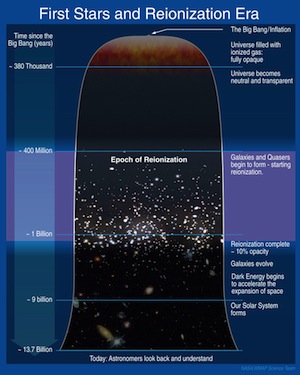Mark is interested in the formation of the very first stars and black holes in the history of the Universe. This is what is known as the reionization era, which started about 400 million years after the Big Bang.
Astronomers believe that the very first stars were between 30 and 300 times as massive as our own sun. Heavy stars live shorter lives, and many of these early stars ended their lives in supernova explosions after only a few million years.
– What are you trying to find out with your research?
– I am especially interested in the connection between the first galaxies and the space between galaxies, which astronomers refer to as the intergalactic medium. I try to figure out new ways in which we can learn about processes going on here.
– How do you do that?
– I construct models of radiative processes and radiative transfer on computers, and from these models I make predictions that can be tested observationally.
– Where did you work before coming to Oslo?
– After graduating in the Netherlands I arrived in New York in September 2001 to start my PhD. It was a rather strange and depressing start. The September 11 attacks occurred only five days after I had freshly arrived in New York City. Despite this, I eventually had a great time at Columbia University. I also met my wife in New York.
– Later I worked as a postdoctoral researcher in Melbourne, at Harvard University, and at Max Planck Institute for Astrophysics in Garching (in Germany).
– And how did you end up in Oslo?
– Personally, my wife, my two kids and I love hiking and being outdoors. I also love great coffee! Oslo and Norway seems to be a perfect place for these things.
– Professionally, ITA is a great spot for me to pursue my research. The Solar Physics group has extensive expertise in radiative transfer modeling, from which I hope to benefit in the years to come. I am also very much interested in the work of the Cosmology group, and hope to collaborate with - and learn from - them.
– Finally: how did you become an astronomer?
– I have known that I wanted to be an astronomer since I was 13 years old. I am still fascinated by the science, and I love the opportunity to live in and travel to different places and continents.

